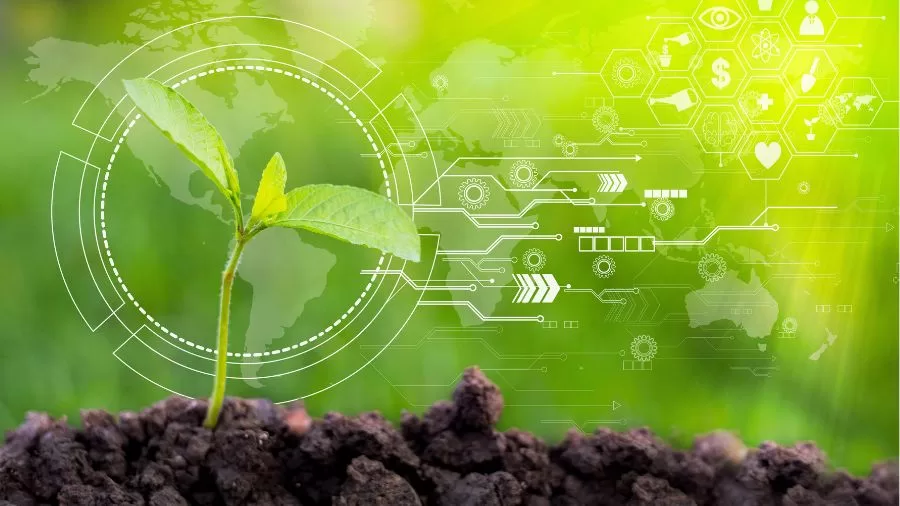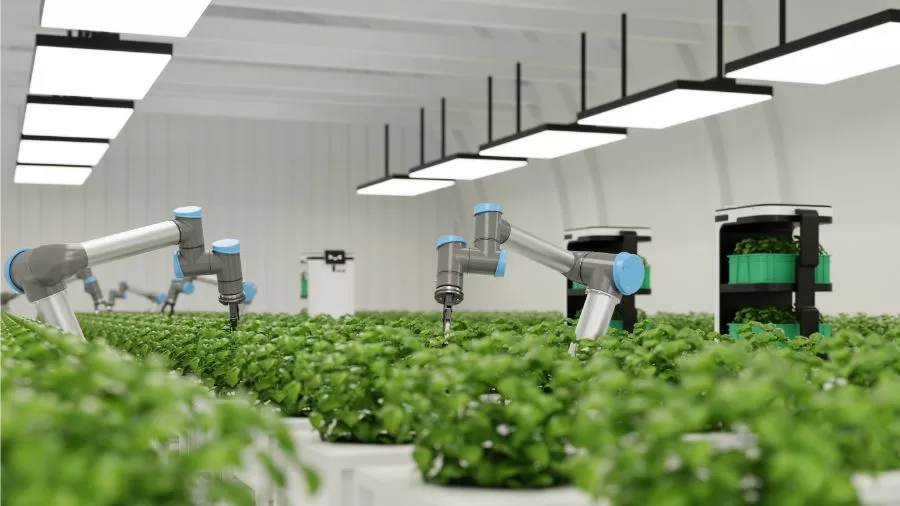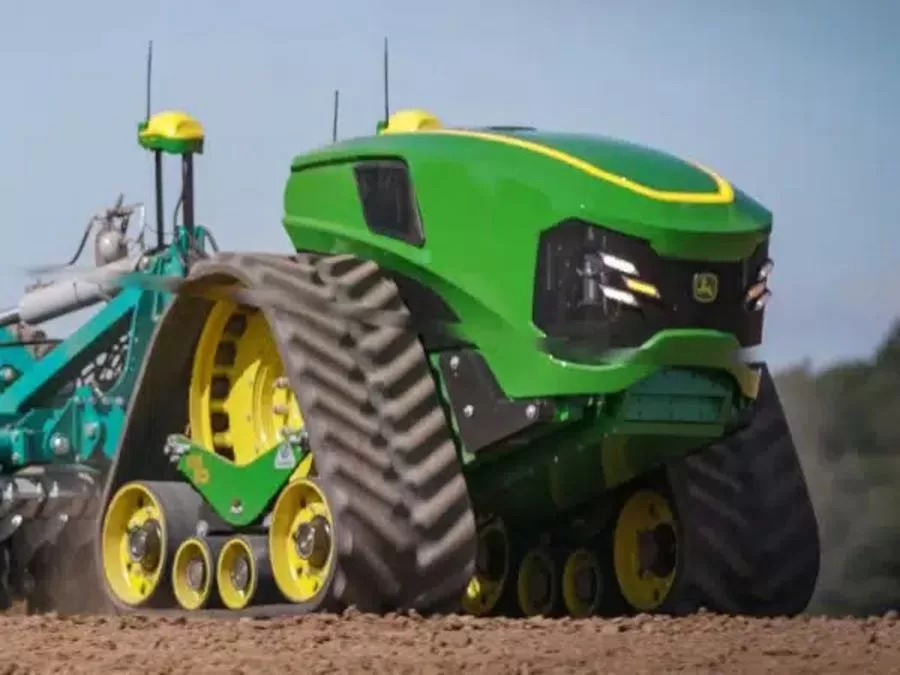Auto
AI in Agriculture: 5 Game-Changing Innovations Revolutionising Farming

- Robotics-assisted farming has autonomously been transforming farming into a system of efficiency, less chemical application, and sustainability.
- Innovations such as that of fungicide shooting high ultraviolet (UVs) and output-increasing self-driven mule-cum-trucks being applied on farms would decrease costs and environmental harm and enhance productivity, now automated with the help of smart technology.
The technological evolution has landed in agriculture with artificial intelligence (AI) and robotics perverting the model of traditional agriculture. It provides an efficient, sustainable, and valuable way of farming. These are the four trails of AI-led advancement into farming.
AI-Guided Herbicide Sprayers: Precision in Weed Control
Every year, farmers worldwide spend billions of dollars on herbicides to fight undesirable weeds. Unfortunately, this often leads to a concern of hazardous the harmful chlorinated chemicals used to do nothing but degrade the environment and human health! The solution to this menace is happening in companies using far more advanced herbicide sprayers. These use camera-guided computers to pinpoint weeds, maybe even at a precise level. By determining what unwanted plants are to be found and only spraying where it is necessary, advanced sprayers have greatly reduced chemical usage by even 90%. This saving results in a win-win situation of profits for farmers and prevention of chemical drift that might have resulted in an unwanted adverse effect on neighbouring crops and ecosystems. Thus, major ag corporations are quick to incorporate AI in their business models, hoping for massive benefits in efficiency and sustainability.
Intelligent Cargo Mover is the Future of Farming
Traditionally, farm tools and equipment such as tractors have always been powered by gasoline engines that release carbon into the atmosphere. Today, AI and robotics are being embedded with technology to create environmentally sustainable alternatives. An example is the autonomous, load-bearing electric mule, which can travel through farmland carrying heavy loads efficiently.
This AI-powered mechanism efficiently transfers heavy loads over rugged terrain without emitting contaminants in the air. Such super-gear boosts productivity by reducing its carbon footprint as a by-product. By the conversion of fuel-driven instruments in the farming sector into electrically powered ones, the industry sends a profound message promoting greener techniques.
A UV Robot That Shoots Fungi Away Using Ultraviolet Rays—Chemicals Are Over!

Fungal infections are very destructive for the crops, and chemical fungicides then pose environmental and human health risks. AI-based UV robots provide an incredible alternative to this situation. AI-based UV robots use ultraviolet light to get rid of fungi and mildew.
These robotic warriors have been exerting AI control over farms; they scour crops using AI and determine the infected area before attacking these with the accurate UV-C light spectrum. This method helps to reduce fungicide applications by 70% and changes the sustainability game for farming. Additionally, the robots are using their batteries to move around. This further reduces pollution and adds another eco-friendly feature.
Laser Weed Technology: The Ultimate Weed Get out there
Weeding the field has been a nemesis for farmers, involving the hiring of manual labour or the use of synthetic herbicides. A new wave is hitting the plant and agriculture management technology through laser weed management, where AI is employed to identify undesirable plants instantly and target them.
This product is based on state-of-the-art evolutionary codes that utilise high-precision lasers to eliminate weeds on cellular levels. Conserved are the crops – but the weeds resisted. This is a non-chemical alternative. It can go a long way to choice. The prospects are promising for a new/developing agriculture era if this technology is well structured to discern between different crop/weed types within a diversified array of malt galaxies.
Self-Driving Tractors Are Becoming Increasingly Autonomous.

Source: Microsoft Copilot
The agricultural sector is increasingly embracing automation, with self-driving tractors increasingly entering modern agricultural use; these automatic machines are true examples of AI, sensor prowess, and GPS technology for ensuring task performance such as ploughing, sowing, and harvesting, with minimal human intervention.
Equipment such as self-driving tractors eliminates hindrances in the setting up of robotic-fleet farming for purposes of increased efficiency, cost-saving machine labour, and operations’ precise performance so critical for the agriculture sector. By using AI to sense soil conditions and adjust planting patterns, they can sow under the maximum possible parameters of yield and minimise inputs. Equipment such as continuous operations supports the completion of activities faster than humans.
In the lead of this trend are companies, including John Deere and Case IH, whose latest innovation touches the production of fully autonomous tractors that work in concert with other smart farming systems. Although there is still some unrest about replacements, there remains an optimistic feeling that increased automation in agriculture can lead many rural jobs to the tech-centric ecosystem, thereby making the industry modern.
Why AI in Agriculture—a Renewable Future
AI in agriculture does more than just increase production; it also assists in fostering sustainability. The efficacy of industrial chemical use is decreasing, and resources are being used in a more optimally environmentally friendly way. AI’s historic success, as it advances, is in providing means to address most of the challenges of global food security while ensuring farming remains financially rewarding and eco-friendly.
Beneficiaries, the agricultural field now heads for a beneficial future in the modern era of ecology, efficiency, and technology by embracing these AI-based farmers’ aids.




















































